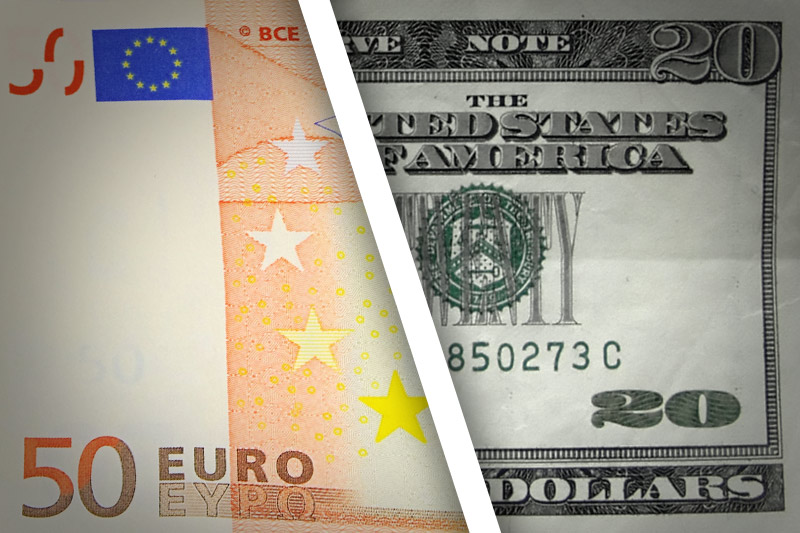Investing.com’s stocks of the week
Investing.com - The euro held gains against the U.S. dollar on Thursday, after the release of mixed U.S. economic data, although concerns over the euro zone debt crisis and U.S. fiscal policy remained.
EUR/USD hit 1.2773 during European afternoon trade, the daily high; the pair subsequently consolidated at 1.2763, adding 0.22%.
The pair was likely to find support at 1.2704, Wednesday's low and resistance at 1.2827, the high of November 6.
The U.S. Department of Labor said the number of individuals filing for initial jobless benefits in the week ending November 10 rose by 78,000 to a seasonally adjusted 439,000, compared to expectations for an increase of 14,000 to 375,000.
Jobless claims for the preceding week were revised up to 361,000 from a previously reported 355,000,
In addition, official data showed that U.S. consumer price inflation rose by 0.1% in October, in line with expectations, after 0.6% increase the previous month.
Core CPI, which excludes food and energy, rose 0.2% last month, more than the expected 0.1% increase, following a 0.1% rise in September.
A separate report showed that the Empire State manufacturing index improved to minus 5.2 in November from a reading of minus 6.2 the previous month, beating expectations for a decline to minus 6.7.
Meanwhile, sentiment on the euro remained fragile after official data showed that euro zone gross domestic product contracted by 0.1% in the third quarter, albeit less than the expected 0.2% contraction, following a 0.2% fall in the previous quarter.
Investors also remained concerned over the looming “fiscal cliff” in the U.S., approximately USD600 billion in automatic tax hikes and spending cuts due to come into effect on January 1.
There are fears the U.S. economy will fall back into a recession, unless a divided Congress and the White House can work out a compromise before then.
Elsewhere, the euro was higher against the pound with EUR/GBP rising 0.22%, to hit 0.8059.
Later in the day, a speech by Federal Reserve Chairman Ben Bernanke was to be closely watched for any indications on the future possible direction of monetary policy.
EUR/USD hit 1.2773 during European afternoon trade, the daily high; the pair subsequently consolidated at 1.2763, adding 0.22%.
The pair was likely to find support at 1.2704, Wednesday's low and resistance at 1.2827, the high of November 6.
The U.S. Department of Labor said the number of individuals filing for initial jobless benefits in the week ending November 10 rose by 78,000 to a seasonally adjusted 439,000, compared to expectations for an increase of 14,000 to 375,000.
Jobless claims for the preceding week were revised up to 361,000 from a previously reported 355,000,
In addition, official data showed that U.S. consumer price inflation rose by 0.1% in October, in line with expectations, after 0.6% increase the previous month.
Core CPI, which excludes food and energy, rose 0.2% last month, more than the expected 0.1% increase, following a 0.1% rise in September.
A separate report showed that the Empire State manufacturing index improved to minus 5.2 in November from a reading of minus 6.2 the previous month, beating expectations for a decline to minus 6.7.
Meanwhile, sentiment on the euro remained fragile after official data showed that euro zone gross domestic product contracted by 0.1% in the third quarter, albeit less than the expected 0.2% contraction, following a 0.2% fall in the previous quarter.
Investors also remained concerned over the looming “fiscal cliff” in the U.S., approximately USD600 billion in automatic tax hikes and spending cuts due to come into effect on January 1.
There are fears the U.S. economy will fall back into a recession, unless a divided Congress and the White House can work out a compromise before then.
Elsewhere, the euro was higher against the pound with EUR/GBP rising 0.22%, to hit 0.8059.
Later in the day, a speech by Federal Reserve Chairman Ben Bernanke was to be closely watched for any indications on the future possible direction of monetary policy.
